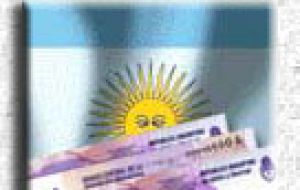MercoPress. South Atlantic News Agency
Argentina: record exports and a 12.4 billion surplus

Argentina last year posted a 12.4 billion dollar trade surplus on record exports of 46.6 billion dollars and record imports of 34.2 billion dollars, helped by an average growth of about nine percent in each of the last four years after a crippling five-year recession.
Meanwhile, trade with its partners in the Mercosur trade bloc â€" formed also by Brazil, Paraguay, Uruguay and Venezuela â€" showed a 2.8-billion-dollar deficit on exports of 9.91 billion dollars and imports of 12.7 billion dollars. According to the state-run INDEC statistics and censuses agency, last year's trade balance surplus was 6.4% higher than that of 2005, when Argentina recorded a 11.7 billion dollars surplus. Exports last year rose 15% from 2005 while imports rose 19%. The higher trade surplus was mainly explained by a strong increase in exports of Industrial Origin Manufactures â€" the sector with the highest added value. Agricultural Origin Manufactures accounted for 33% of total exports. Primary products exports accounted for 19% of total exports and fuels and energy for 16%. The area showing a larger increase in absolute value was land transport material, with giant neighbor Brazil being the main destination. Brazil, which ranks among the world's top ten economies, is Argentina's largest trading partner. The Mercosur trade bloc last year continued being the main destination for Argentine exports, with a 22% of the total, followed by the European Union, 18%; Asia and Pacific area nations (namely China, Japan and India), 16% and the North America Free Trade Agreement bloc (NAFTA, formed by the US, Mexico and Canada), 13%. Exports to Mercosur countries rose 29% last year while imports from those countries grew 15%. The main products sold to Mercosur were transport material, chemical products, wheat, copper ore, fresh fruits, milling industry products and fish, while main imports were intermediate goods, capital goods and spare parts for capital goods. Mercosur was the main source of imports, with nearly 40% of the total, while Asian countries accounted for 17% and NAFTA 16%. The government of President Néstor Kirchner, which took office in 2003, expects exports to hit 50 billion dollars this year partly helped by the economic recovery and an exchange rate that is expected to continue around three pesos to the dollar, the same as over the last few years. Economy Minister Felisa Miceli has insistently urged local businessmen to add value to their exports, arguing that Argentina exports products at 460 dollars per ton and imports at 1,500 dollars per ton. For his part, former Central Bank head Mario Blejer said that the prices of commodities, of which Argentina is a large exporter, will continue growing due to a strong demand from countries like China and India, which, he added, contributed to uphold prices over the last five years. "There are no prospects for this scenario to change in the mid term," he said. Guillermo Hánskel (MercoPress) Bs. Aires




Top Comments
Disclaimer & comment rulesCommenting for this story is now closed.
If you have a Facebook account, become a fan and comment on our Facebook Page!